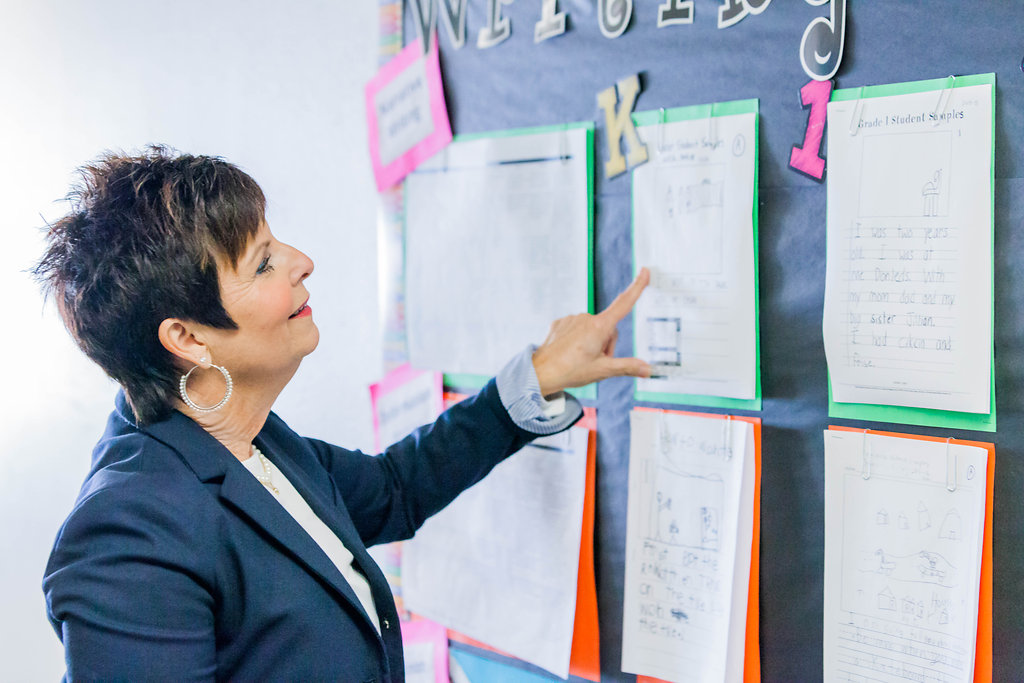Hi Again Friends,
In my role as a literacy consultant, I get to talk to a lot of teachers. I also spend a lot of time listening to teachers and it’s that time of year again, when it seems like everyone is talking a lot about data results and testing. What are we actually measuring when we test children? And do we really get honest and accurate results that will be used to inform our next steps in instruction, or are we essentially finding out who has issues with text anxiety, who has the necessary computer skills to navigate the on-line assessments, who has visual spatial awareness issues and can’t seem to complete the test accurately and never seems to get the information completed correctly, and who has time management issues and never completes the assessment at all. Suffice it to say, the list of test- taking hurdles goes on and on, and I haven’t even talked about bandwidth, right?! Now don’t get me wrong, I think some well-designed assessments are really valuable and can give us important information.
As a former Reading Recovery teacher, I used assessments as part of my reading instruction daily. As part of that instruction, I used a diagnostic tool (running records) to learn more about a child’s reading behaviors as a way of making a tentative hypothesis to guide my targeted instruction. The use of the running records when combined with my observation records and questions from a reading survey helped me learn heaps more about a child’s reading terrritories, habits and behaviors as a reader. It concerns me, that somewhere along the way, some are using running records as a “test” that kids need to “pass” at a specific level in order to be considered a proficient reader.
Here’s a snippet from a recent conversation a teacher shared with me about a student, “She passed the ___ book and is now a level___.”
That statement gets my blood boiling and undermines the point of giving a running record- taking note of a child’s habits and behaviors as a reader. What happened to describing the learning behaviors we see the child can control? If we only emphasize the reading level we are losing sight of the child. It’s like saying, you know everything about that person because you know their shoe size.
Let me be clear, I love running records and value the information they provide. They are hugely helpful in my arsenal of assessments, but they are just a tool. If you think one assessment, one book, one test can tell you about the whole child, you are well- dangerously mistaken. In my humble opinion, they are to be used as one component in an arsenal of teaching and diagnostic tools.
Equally so, I find written performance assessments invaluable if used as an informational tool to guide instruction. Written performance assessments can be effective when teachers take the time to analyze student writing, and deliberately look for ways that the writing is a step beyond yesterday’s work. An assessment is not just about yielding “data” or the “level” or numeric “score”, or sadly, inflated scores, because we want so badly for our kids to succeed. When performance assessments are used to coupled with observing and noting student writing behaviors we, as teachers, can provide them with concrete, specific feedback that outlines their next steps that can help them learn and grow as writers.
So what does it mean to grow and learn? What do we measure when we assess students? Where on data can I show the student that is no longer afraid to take risks as a reader or writer? Where on the data can I measure the growth students made in fluency, volume and stamina? Or the growth they made as a collective community of learners?
It’s about time we realize, children are not letters, numbers or scores. They are people who are our generation’s best hope for a better world. So what do we want that world to look like? What are we saying to these children if we quantify them with a number, a letter or a score? My hope is that we look at the whole child and put the person before the number, or the score and that we always encourage and embrace the curious, inquisitive learner, value the risk taker and life-long learner. My hope is that we make the time to have conversations with students about who they are, what’s important to them, what interests them, what surprises them, in general, what makes them tick. And in those rich conversations show them ways they can continue their growth progression, and help them outline achievable goals. Finally, take the time to observe if students are actually applying the skills and strategies they have been taught. And most importantly set up the conditions that encourage students to be critical thinkers, evidence-based readers, and writers while providing meaningful, rigorous instruction. Children deserve to be given feedback they can use and apply to continue to grow. Honestly, I don't think that's a number or a score.
Teaching is not about getting kids to “pass a level” or be a “score on a rubric”. Teaching is so much more than that. Well-designed assessments are invaluable resources to teachers and will always have a place in our arsenal of teaching tools. But, assessments are just that tools. What we do with the information the assessment tool provides is on us. That information should guide our every next instructional step. Teaching well means looking at the students’ work and imagine next steps for that student and then teach your heart out to outline an actionable course for them to follow. The truth of it is, real teaching is in the relationships we foster with children, who we are, what we value and practice. What do you value and practice?
I’d love to hear what you think in your comments below.
Stay tuned, in the spirit of assessment season, next week I'll talk more about formative writing assessments and looking at student writing in the company of colleagues.




